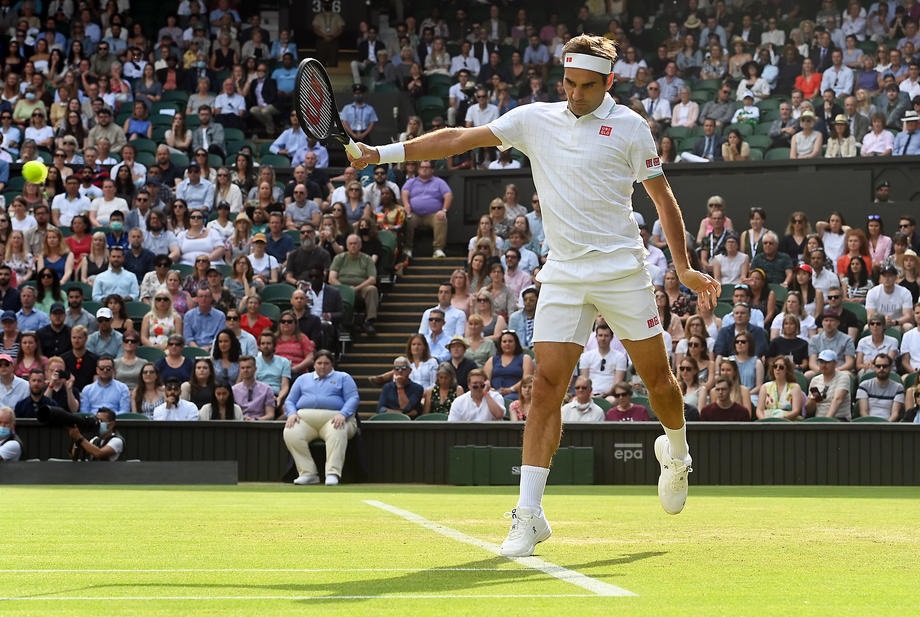- Ricky’s picks for this week’s ATP 500 in Rotterdam
- ABN AMRO Rotterdam Open Draw and Schedule of Play for Wednesday, February 5, 2025
- Former No. 1 Simona Halep Announces Her Retirement At Age 33
- ABN AMRO Rotterdam Open Draw and Schedule of Play for Tuesday, February 4, 2025
- Petra Kvitova Will Launch Her Comeback in Austin
- Rotterdam ATP 500 draw: Alcaraz, Medvedev, Rublev headline stacked field
- ABN AMRO Rotterdam Open Qualifying Draw and Schedule of Play for Saturday, February 1, 2025
- Taylor Fritz to Play Opening Match February 13 in Historic Delray Beach Open Three-Peat Quest
- Stars Join Forces for Eisenhower Cup Return to Indian Wells on March 4
- Ken Thomas Broadcasting from Georgia’s Rome Tennis Open
- Solinco Launches All-New Whiteout V2 Racquet
- Stringlet: Serving Up Tennis Inspiration With A Twist
- Davis Cup qualifying to feature Brazil vs. France and Spain vs. Switzerland
- 2025 US Open Expands to Sunday Start
- Tennis Channel To Broadcast U.S. Davis Cup Qualifier vs. Tawain
Tennis News • Chair Umpires And Tour Supervisors Are Just Fixtures In Seats • Ask Andy Murray Or Roger Federer
- Updated: October 12, 2019
By Alix Ramsay
When Roger Federer was docked a point for unsportsmanlike conduct in Shanghai a couple of days ago, the world was rocked. It did not exactly stop spinning on its axis but it certainly juddered momentarily. The world was thinking about it. Roger? Unsportsmanlike? A penalty point deducted? What was happening?
What was happening was that Roger was losing to Sascha Zverev, he was getting tetchy and twice he thwacked a spare ball high up into the stands. The first time he was warned; the second time, he was penalised. He wasn’t happy about it but them’s the rules.
Which got us to thinking: if rules are rules, how come they are interpreted differently by different umpires? And how is that fair?
Carlos Ramos was berated by one and all for daring to follow the rules and sanction Serena Williams for being coached (albeit unknowingly, if you follow her line of defence) during the US Open final last year.
Fergus Murphy, on the other hand, was regarded as but a bit-part player as Nick Kyrgios melted down in Cincinnati this past summer, even though he sat quietly and did nothing as Nick called him everything from a “tool” to the “worst in the world” at his job (there may have been a few rude words included in those outbursts, too).
Then, as the tour moved on, Carlos was informed that he would not be officiating at any of Serena’s matches in the 2019 US Open. While he may have been relieved at that prospect – the attention on him and on Serena would have been all but unbearable – it still left the lingering doubt that the powers-that-be thought he had been at fault in that final. That did not seem either right or fair. He was just following the letter of the law.
Meanwhile, Nick was landed with a 16-week ban, suspended for a six-month probationary period, after Cincinnati. He was also fined $113,000 for five separate incidents during his match with Karen Khachanov plus an additional $25,000 once the ATP had concluded its investigation.
Fair enough, Nick had pervious in such matters. He exploded in Rome – he threw a chair across the court and then stomped off to the locker room – and he picked up a hefty fine at Queen’s Club. And that is only this year. Even so, that he was allowed to go on and on in Cincinnati, digging himself into a deeper and deeper hole, while Fergus let him, does not makes sense. If the rules are there, why do the umpires not always use them?
Fergus was doing his “hear no evil, see no evil” act again in China last week. Andy Murray and Fabio Fognini were in the thick of battle (three sets, three hours) when the Scot raced towards a volley. As he went to hit it, he heard a noise. Fabio had shouted something, or so Andy thought. He put away the volley but he was seething.
Andy argued his case with Fergus (he was citing the hindrance rule); Fergus had little to offer. Fabio had plenty to say as Andy continued to make his case (and was told in no uncertain terms to “shut up” by his opponent). Still Fergus did nothing.
Surely, if the umpire did not hear or see something, he should be able to call for help. He has a small army of line judges on court whom he could consult. And there is always the tournament supervisor – him in the suit with the walkie-talkie who lurks anonymously at the back of the court. Could he not come into play?
It is not a sign of weakness to ask for help, particularly if it is going to calm a volatile situation. Admittedly, most men do not ask for advice willingly (as anyone will tell you who has ever sat in a car beside a belligerent bloke and suggested that we stop and ask for directions rather than go round in circles as we have been for the past hour and a half) but sometimes it does make a difference.
Football now uses the Video Assistant Referee for close decisions on penalties, offsides and the like, rugby has the Television Match Official to confirm that a try has been scored and even tennis has technology available to it in Hawk-Eye. Why, then, if something had happened on court and no one seems to know exactly what, can the umpire not call for more assistance? Surely that is better than the ump sitting on his hands, the tournament supervisor keeping schtum and the player getting more and more annoyed.
Of course, it may limit the ATP’s income somewhat: officialdom is never shy of fining a player after the fact if he or she gets a little industrial with their language during their discussions with the umpire.
Then again, they could make up for it by fining the umpire if he or she is found to have made a mistake, especially if it ends up costing the player the match. It’s just a thought.







